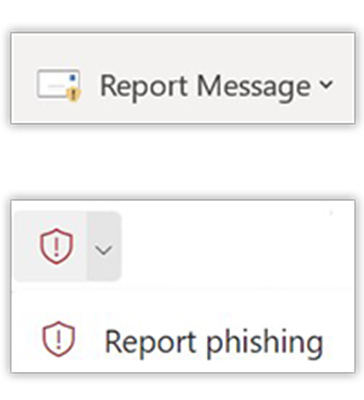It's lunchtime and you're planning after-work errands -- pick up more wrapping paper, go to the post office -- when a text message flashes on your phone: We noticed unusual activity on your bank account. Verify your information here.
Lunch set aside, you prepare to spend the next 20 minutes handling the situation. But you take a closer look at that text message. Is that message real, or is it a scam?
Scams you might see

This time of year sees an uptick in online scams that may come in the form of text message, email or phone call.
"Scammers want your money, so they do their best to be creative and convincing," said Rich Tener, Iowa State's chief information security officer. "Most scams are variations on getting people to hand over payment card information, sensitive personal information or login credentials for your bank, or directly transferring money to them."
Two of the scams surfacing this holiday season involve banking and package delivery.
Unusual banking activity. A scammer pretends to be from a financial institution, claiming they have detected unusual activity with your card or account. You are prompted to provide personal information over the phone or within an online form.
"I received a scam call from an 866 number with a very convincing automated message saying unusual activity was detected on my bank account. When I called the number back, there was a human on the line and they asked me for my bank card number," Tener said.
Package delivery. A scammer pretends to be from a postal or shipping company. They may claim you need to verify your personal information before a package can be delivered. They also may threaten to return your package to the manufacturer if you don't take action immediately.
For more information about scams, how to recognize them and how to avoid them, visit the Federal Trade Commission's imposter scams website.
AI in the picture
Artificial intelligence is top-of-mind in the tech world. For scammers it's no different. By leveraging AI, scammers are able to make fraudulent messages more convincing.
"You used to be able to spot a scam from misspellings or grammatical errors," Tener said. "Now, those signals are not as common."
AI tools can correct errors in writing, but there are other ways to identify scams and stay protected online.
Staying protected against scams
According to Tener, the number one piece of advice for protecting yourself against scams is to verify who you're talking to -- always -- whether that's your bank, a friend, a coworker or even a family member.
If someone calls with an usual request for information or money, politely hang up and call them back on a number you know is theirs. If you don't have a phone number saved for a company that contacts you, check their website to find a phone number you can trust.

If the request is through text message or email, contact that person or company through a different medium. A phone call is usually best. Again, make sure you verify their phone number independently.
If you receive a suspicious message or phone call as an Iowa State employee, report it to the IT Security team. For a suspicious email, use the Report Message button in Outlook that routes directly to Tener and team. For a suspicious text message or phone call, send an email to security@iastate.edu with details of the situation and any helpful screenshots.
More tips for recognizing holiday scams
- Be certain you use the company being referenced. If you don't do business with them, there's a good chance it's a scam.
- Watch for time-sensitive messages. Many scams will invoke a sense of urgency, with a "do this now or face the consequences" message.
- Take a close look at not only the sender's name but their email address. Consider the level of professionalism.
- If you need to follow up on the message or phone call, contact the person or company through information you've verified. Do not use the contact information they provide in the message or over the phone.

